Retirement Savings Tips
 Millions of Americans make the mistake of waiting until their golden years before saving for retirement. The fact is that we simply don’t know what the future holds for us, and as such, we should begin saving for our retirement at much earlier age. Doing so will ensure that we’re able to enjoy the later years of our life without having to worry about work.
Millions of Americans make the mistake of waiting until their golden years before saving for retirement. The fact is that we simply don’t know what the future holds for us, and as such, we should begin saving for our retirement at much earlier age. Doing so will ensure that we’re able to enjoy the later years of our life without having to worry about work.
Let me first say that you’re never to young to start saving for retirement. According to the United States Department of Labor, the average American spends approximately 20 years in retirement. If your lifestyle and medical expenses cost roughly $50,000 a year, you’ll need $1 million to sustain your retirement. As you can see from that example, the sooner you start saving for retirement, the better.
You should know by now that saving for retirement at an early age is important, but where do you actually start? If you haven’t done so already, check with your employer to see if they offer a retirement plan such as a 401(k). Signing up for a 401(k) plan is one of the easiest ways to start saving money for your retirement. Basically, they’ll take a small portion out of your paycheck, add their own money to it, and place it a retirement account for you.
There are several advantages of using a 401(k) retirement plan, one of which is the reduced taxes. This means the more money you’re able to put into it, the less income taxes you’ll have to pay when April rolls around the following year. To really take advantage of the lower taxes on a 401(k), you should try to add the maximum amount of money possible to your account.
If your employer doesn’t offer a 401(k), perhaps you should try asking them to start one. When enough employees voice their concerns over an employee retirement account, the company may listen and respond by taking action. You can’t always place your retirement in the hands of an employer, though. Speak with a financial adviser about setting up an Individual Retirement Account (IRA). There are two types of IRAs – traditional and Roth, both of which allow the individual to contribute a maximum of $5,000 per year if they’re under the age of 50.
The number one reason why some people have difficulty saving for retirement is because they withdrawal their money too early. You have to treat a 401(k) and any other type of retirement savings account as just that – money for your retirement. When financial hardships occur, see if you can’t get a short-term loan from your bank. Taking money out of your retirement account early will likely cause you to lose your tax benefits and even accrue some other hefty fees as well.
When you’re ready to retire, you should visit the Social Security website to see if you’re eligible to start reviving benefits. While the amount you’ll receive varies from person to person, you can expect to get around 40% of what you earned before retirement. Along with an IRA and 401(k), social security will help to add some financial padding to your bank account during retirement.
Tips on Getting Approved For a Business Loan
 Thinking about starting your own small business? According to the Small Business Association (SBA), there are approximately 27.9 million small businesses, and 18,500 firms with 500 employees or more operating in the U.S.
Thinking about starting your own small business? According to the Small Business Association (SBA), there are approximately 27.9 million small businesses, and 18,500 firms with 500 employees or more operating in the U.S.
Among other things, you’ll have to pay for the business licenses, insurance, lease, utilities, payroll, marketing, tools, and on-going training. It’s not uncommon for some entrepreneurs to spend tens of thousands of dollars just to get their business up and running. The good news is that you can apply for loans at various banks and financial institutions, but the bad news is that you won’t always get approved.
If banks approved each loan application they received, they wouldn’t be able to stay in business. When lending money to entrepreneurs, they want to know it’s going to a well-structured business with a clear strategy and objective. After all, they probably won’t get their money back if the business fails. Understanding this principle will help you make smarter decisions on your loan applications; thus, improving your chances of approval.
Apply For The Right Loan
To boost your chances of approval, make sure you apply for the right type of small business loan. There are several different types of small business loans, each of which is designed for a specific reason. For instance, there are startup loans, business acquisition loans, debt consolidation loans, etc. Ask yourself – how do I plan to use this capital? – and then choose the loan that best fits your professional needs.
If your goal is simply to pay off credit card debt that you acquired from launching your business, then you’ll want to apply for a debt consolidation loan. These loans are incredibly helpful for a number of reasons; they’ll consolidate some (or all) of your debt into a single convenient loan. Rather than sending half a dozen or more monthly payments to your debtors, you can make a single payment to the loan lender. And depending on the terms and conditions, a debt consolidation loan will probably have a lower interest rate than most standard credit cards.
Be Professional
You can’t expect a bank or financial institution to lend you money for a small business if you show up in casual attire with no real sense of professionalism. Before meeting with any lenders, gather all of your documents and financial records pertaining to the practice. Even if your business is still in the works, you can draft up projected sales and revenue with the help of an accountant. This shows banks that you are serious about your business, and as such, they’ll lend you money with more confidence.
Pros and Cons of Using Debit Cards
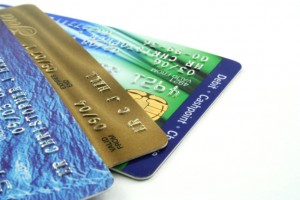 One of the advantages associated with owning a debit card is that it gives you the ability to make online purchases. Not everyone has a credit card and many of those who do probably don’t want to use it every time they make a purchase. The high interest rate, fees and surcharges can really start to weigh down your bill. Thankfully, an alternative method is to use a debit card for online shopping.
One of the advantages associated with owning a debit card is that it gives you the ability to make online purchases. Not everyone has a credit card and many of those who do probably don’t want to use it every time they make a purchase. The high interest rate, fees and surcharges can really start to weigh down your bill. Thankfully, an alternative method is to use a debit card for online shopping.
If you’ve never made an online purchase using a debit card before, you might wondering how it works. The process varies depending on what website you’re purchasing from, but most involve using a secured checkout page to enter in your debit card information. Before making any online purchase, make sure the address in your web browser starts with “https”, which basically states the page is secure and your private information will remain protected.
When you’re ready to checkout, you’ll need to enter your debit card information into the website. After you’ve identified the website is secure, enter in your card number, expiration date, CCV and your billing information. Your order should be instantly processed after submitting your debit card information.
There are a couple of disadvantages to using a debit card over a credit card for online purchases, the most serious of which is the amount of liability protection offered. Most all credit cards are pretty good about dealing with theft situations. If someone steals and uses your credit card to rack up thousands of dollars in purchases, you can call the company and have the card immediately frozen and your charges reversed. On the other hand, a thief can wipe your bank account clean if they’re able to get their hands on your debit card. Although the bank will probably return some or all of the stolen money, it will certainly take longer than credit cards.
In addition to only making debit card purchased from a secured website, you should also refrain from storing your account information in a location where hackers and would-be thieves could access it. Even if you “think” your email account is safe, hackers are always retrieving data for thousands of accounts. In fact, nearly half a million email addresses and passwords of Yahoo users were recently compromised by hackers. The hackers responsible for this act left a note stating this wasn’t a malicious attack, but rather a wake up call to the vulnerabilities in Yahoo’s system.
Debit Card Transaction Fees For Small Businesses
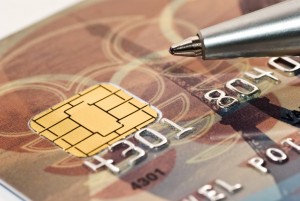 If a small business or retailer wants to have the ability to offer credit and debit cards as a form of payment to their customers, they must pay the corresponding bank a certain amount for each transaction. This transaction fee is set by the bank and is sometimes more than the retailer is willing to pay. If you’ve ever been a store that didn’t offer a specific credit or debit card, it’s because the transaction fees were too high for them.
If a small business or retailer wants to have the ability to offer credit and debit cards as a form of payment to their customers, they must pay the corresponding bank a certain amount for each transaction. This transaction fee is set by the bank and is sometimes more than the retailer is willing to pay. If you’ve ever been a store that didn’t offer a specific credit or debit card, it’s because the transaction fees were too high for them.
There’s really not too much of a difference between using a debit or credit card at a retailer. Once you swipe your card, it will go through whatever baking system it’s associated with, such as Visa, Discover or AMEX. Both debit and credit cards use these banking systems to handle transactions and each of them have different transaction fees.
So how much is the average debit card transaction fee? A couple of years ago, banks were charging as much as 2% for each transaction. This may not seem like a lot, but that 2% adds up on each and every purchase. If a retailer were to generate $100,000 in debit cards, that’s $2,000 in fees alone. Some of the larger retailers may go well into multi-million dollar revenue, which would incur a significantly greater amount of fees.
Most of us aren’t store owners or retails so these transaction fees aren’t going to directly affect us. With that said, banks are now shifting their focus to start charging their customers to use their debit cards as well. Thankfully, this isn’t a transaction fee yet, but rather a monthly fee tacked on to the customers account. This is a fairly new occurrence that many banks are trying out for the first time.
Even if your bank doesn’t charge their customers for using their debit cards, you should still keep en eye out for any new information they send you in the mail. In the event they decide to start charging their customers, they should send you information about the bank debit card fee, so be sure to read any new mail they send out.
If you aren’t happy with any new debit card fees charged by your bank, be sure to voice your concerns to them. Banks are still testing out these fees to determine whether or not they’re a smart business move. While the fees are minimal, it’s still money that’s being taken out of the customers pocket.
Will I Get Approved For a Credit Card?
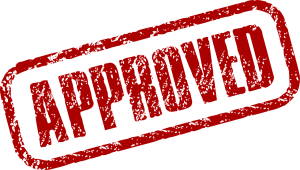 Many people with either no credit or a poor credit history ask themselves “Will I get a credit card?”. Banks and card issuers use a lot of factors to determines ones eligibility, such as payment history, credit score and income. If you don’t have any credit, or if you have poor credit, you’ll certainly have a tougher road ahead of you, but you can successfully get a credit card if you know the right steps to take.
Many people with either no credit or a poor credit history ask themselves “Will I get a credit card?”. Banks and card issuers use a lot of factors to determines ones eligibility, such as payment history, credit score and income. If you don’t have any credit, or if you have poor credit, you’ll certainly have a tougher road ahead of you, but you can successfully get a credit card if you know the right steps to take.
A decade ago, credit cards were given out more frequently than they are today. However, with the downwards trend of the job and house market, as well as other financial sectors, the card companies have become a bit more strict on who they issue credit cards to. Now, they take many factors into consideration before handing over that dangerous piece of plastic.
One of the most important factors in determining ones eligibility to receive a credit card is his or her FICO credit score. This number, ranging from 350 to around 850, is your average score based on the three major credit reporting bureaus – Trans Union, Equifax and Experian. While these bureaus are based in the U.S., their scores are still frequently used in other countries as well.
If you’re a U.S. resident, you can get a free credit report once a year from annualcreditreport.com. Here, you enter in your name, address and social security number and it will pull a report from each of the three major bureaus. While many companies offer so-called “free credit reports”, you have to use caution with them, as most of them require you to subscribe with a payment plan before receiving your report.
Card issuers use more than just ones credit score to determine if they’ll give you a credit card. Another factor is your debt to income ratio. Ideally, they want to see that you have a substantially higher amount of income than you do debt. When they see an individual with a large amount of debt and little income, it puts them in a high risk category, which means they probably wont be issued a card.
We all know that paying your bills on time is important to avoid late fees, but it also helps with your credit history. Card issuers will look at your past payment history on both open and closed accounts to see how punctual you are with your payments. If you’ve been paying your bills on time, it’s a good sign you’ll continue to do so with a credit card. On the other hand, if you’ve been consistently late paying your bills, then the company may not want to issue you a card.
Having a credit card is sign of your financial freedom. Once you have one in your possession, you no longer have to carry around a wad of cash in your wallet. Although, you need to be responsible once you have one, as it’s easily to allow your debt to go out of control. For this reason, you should only use your card when you have the money to immediately pay it off.
Controlling Credit Card Debt
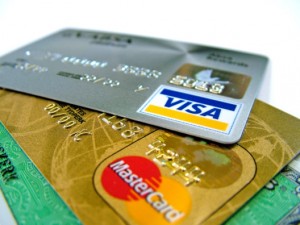 Whether you have a little or a lot of debt, it’s important you take the necessary steps to work on lowering and managing it. If you allow it to get out of control, you risk your debt spiraling out of control. However, a secured debt consolidation loan can help you better manage your debt by lowering your interest rates and monthly payments.
Whether you have a little or a lot of debt, it’s important you take the necessary steps to work on lowering and managing it. If you allow it to get out of control, you risk your debt spiraling out of control. However, a secured debt consolidation loan can help you better manage your debt by lowering your interest rates and monthly payments.
There are two basic types of debt held by individuals and companies – secured and unsecured debt. As the name suggests, secured debt is a type of debt where there’s some form of collateral backing it. For instance, when a person visits a bank and seeks a loan, they may be required to secure it with their car title. This type of debt is known as secured debt. Unsecured debt is is when there’s nothing backing the debt, such as credit cards.
The main disadvantage with secured debt is the risk of losing the assets which are tied to the debt. If your house deed or car title is tied to a debt which you’re unable to pay, the holder of that debt may seek action to take those assets. Most mortgages are considered secured debt, which is why the default into foreclosure when the owner fails to meet the terms of their agreement.
There are advantages to secured debt, however. One of the greatest advantages is the significantly lower interest rates associated with them. Because there are assets backing them, creditors usually offer lower rates of interest with secured debt over unsecured. With unsecured debt, such as credit cards, you can expect to see annual interest rates as high as 19% or more.
Nearly everyone in debt can benefit from consolidating their debt accounts. Basically, secured debt consolidation involves using using a secured debt loan to pay off some or all of your debt. First, you’ll have to find a creditor willing to offer you a loan in exchange for some form of collateral. Once you have the loan, you can pay off all of your high interest credit cards and other debts.
The biggest problem people have with secured debt consolidation is finder someone willing to lend them the money. After all, those who seek this type of loan usually already have credit problems. I recommend starting with your local bank at first. Visit them in person and ask to speak to a loan manager. Tell them how you’re trying to consolidate your debt and see if they’re willing to offer you a secured debt consolidation loan.
If you can’t find a lender willing to offer you a secured loan, you should consider trying some of the debt management companies online. These companies do much more than just negotiate lower payments with your creditors, they may be able to broker a secured loan for you.
Debt elimination doesn’t come easily, but a secured debt consolidation can help you get on the right track to becoming debt free. Call a qualified debt advisory centre beforehand to get some advice tailored towards your specific debt situation. They’ll be offer to tell you if a secured debt consolidation loan is a good idea for you.
Dealing With Credit Card Debt
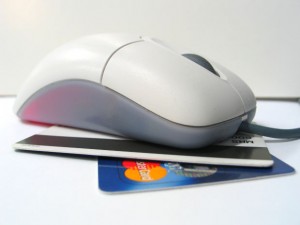 Is your credit card debt slowly spiraling out of control? With mounting fees and compounding interest, it’s easy to feel like there’s no way out of this troublesome and stressful situation. Thankfully, though, credit card help is available to those who are drowning in a sea of ever-lasting debt.
Is your credit card debt slowly spiraling out of control? With mounting fees and compounding interest, it’s easy to feel like there’s no way out of this troublesome and stressful situation. Thankfully, though, credit card help is available to those who are drowning in a sea of ever-lasting debt.
Credit card debt is an ever-growing problem here in the United States. According to recent study, it’s believed card holders in the United States alone owe around 600 billion dollars in debt. This number is simply staggering, especially when you look at the nation with the second highest credit card debt, the United Kingdom. Their debt is only estimated to be around 70 billion pounds.
It’s easy to feel overwhelmed when looking your debt. After all, no one wants a reminder of how badly they are in debt. However, credit card help can get you back on the right track to financial freedom, and the first step in doing so is to take a look at your debt. Get out all of your credit card statements from the past year and analyze how much debt you have, what you’re paying on it, and how long it will take to pay off if you continue to pay at your current rate.
One of the key components to receiving credit card help is budgeting. This means cutting out all of those unnecessary expenses like going out to eat, drinking at bars, sports and concert tickets, etc. While you might be able to budget in your head, you should write it all down in front of you so you can see the numbers first hand. Determine how much you approximately spend per month and start cutting out things that aren’t essential. Depending on your lifestyle and income, budgeting could save you 60% or more per month, and that’s money that could go towards paying off a credit card.
You have to be smart when paying off your credit cards. Avoid those nasty $40 late fees by paying on time and always focus on paying off your card with the highest interest first. If you have several credit cards, make the minimum payments on all but one, the highest interest card. For this card, pay as much as you can per month using any extra income you have.
If budgeting still isn’t getting you any closer to paying off your debt, you may want to consider counseling for credit card help. There are several not-for-profit organizations which help consumers reduce and eliminate their credit card debt. They will sit down with you and discuss your debt situation, income and spending habits. If all else fails, they may suggest filing for bankruptcy. Although, bankruptcy should only be considered as a last resort.
You don’t have to live your life in a sea of credit card debt. Through smart spending, budgeting and focusing on one card at a time, you’ll be on your way to having them paid off. While it may seem like there isn’t an end in sight, once you start making progress on your cards your debt will slowly drop and the light at the end of the tunnel will show itself.
Finding The Right Home Mortgage
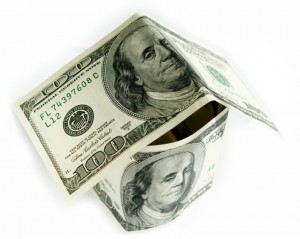 Unless you’re able to pay for your new home with a cash lump sum, you’ll likely have to take out a mortgage. Basically, these are long-term loans offered to new home buyers from banks and other financial lender. As with most loans, though, the interest rates and terms vary greatly depending on which mortgage you decide to go with.
Unless you’re able to pay for your new home with a cash lump sum, you’ll likely have to take out a mortgage. Basically, these are long-term loans offered to new home buyers from banks and other financial lender. As with most loans, though, the interest rates and terms vary greatly depending on which mortgage you decide to go with.
Buying a home is a long-term investment which builds the roots of stability for you and your family. Although some individuals remain hesitant to purchase new homes with the recent drop in the housing market, most analysts say it’s a safe investment now. In fact, the historically-low interest rates create an ideal environment for new home buyers. The bottom-line is that if you’re looking to buy a home, now’s the time to do it.
You probably have much difficulty finding a mortgage provider offering a low interest rate. With that said, it’s still important that you do some comparison shopping to find the one that’s right for you. A one percent or even a fraction of a percent in the interest rate can translate into thousands of dollars in a traditional 30 year loan. So while shopping around at different mortgage providers may be more work, it could prove to be well worth it in the long run.
Along with the interest rate, you should also consider the length of the mortgage. As you can expect, the shorter the loan, the higher your monthly payments are going to be. Typically, the mortgage provider will offer a variety of lengths available for home buyers to choose from. Some of the most common terms are 15, 20, 30 and 40 year loans. Don’t be afraid to go with the longer mortgage terms, as you can still sell your home and pay off the remaining balance after you’ve lived in it for a while and generated some equity.
When finalizing a mortgage, you’ll have to sit down a loan officer while signing a thick stack of papers. Not only does this cost you your time, but you’ll also have to pay a fee known as closing costs. Depending on your provider, terms of the loan, etc., this fee can range anywhere from a $300 to over $1,000. Check with the various loan providers to see how much their closing costs are before making your mortgage choice. In addition, you may also be able to negotiate with the seller and have them pay for your closing costs.
There really isn’t a whole lot that goes into choosing a mortgage. Like most large purchases, you should do some comparison shopping to find the mortgage with an attractive interest rate, preferred term length and low closing cost. Spend a few days calling around to the various mortgage providers in your area and ask them the questions stated above. Remember, though, the most important feature to look for in a mortgage is a low interest rate. Even small, subtle differences in the interest rate of a mortgage can translate into thousands of dollars over the course of the loan.
Fianance Tip: How To Choose The Right Credit Card
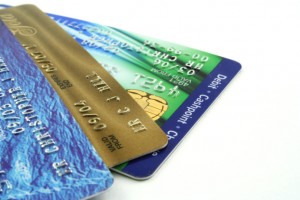 Whether you’re seeking to obtain your first credit card or your 5th, it’s important that you take the time to choose the right one. There are literally hundreds of different types of credit cards available for qualified consumers to choose from, all of which contain their own unique features.
Whether you’re seeking to obtain your first credit card or your 5th, it’s important that you take the time to choose the right one. There are literally hundreds of different types of credit cards available for qualified consumers to choose from, all of which contain their own unique features.
First and foremost, you must identify you intentions with owning a credit card. Most responsible individuals use them to purchase items on the fly without having to carry around loads of cash. On the other hand, some people see to obtain new credit cards so they can transfer the balance of other, higher interest cards. If you’re wanting to transfer and consolidate some of your balances, then you’ll want a card with an attractive transfer rate. The rates vary depending on the terms and specifics of each card, but a good rate to look for would be around 3 to 4%.
Even if you plan on paying off the balance of at the end of the month, you should still look for a credit card with a low Annual Percentage Rate (APR). In short, this is the interest tacked on to any unpaid balance from month to month. A credit card with a 20% APR and a $10,000 balance would draw around $2,000 in interest fees per year. Although, if you were able get a card with a 10% APR, you would essentially save $1,000 per year.
Most credit cards have a few different types of APRs associated with them. The most common APR is for purchases made using your card, which is quite possibly the most important feature to look for in a credit card. However, the APR is likely higher for any cash advances used with your credit card. Some providers offer the card holder the ability to get cash back when making purchases. If you take advantage of this offer, you can expect a higher interest rate associated with this money.
Something that’s oftentimes overlooked by consumers seeking a credit card is the rewards program. With no strings attached, using your card as usual can grant you anywhere from between 1 to 5% cash back or other forms of rewards. For instance, if you own a reward credit card with a 5% cash back system and make $10,000 worth of purchases in a year, that’s an attractive $500 in your pocket for using your card as you normally would.
The last thing you want to look for in a credit card is the length of time you have to pay off your monthly bill, also known as the grace period. Some of the more flexible card providers offer grace periods of 4 weeks or longer. Hopefully you don’t wait around for nearly a month to pay your bill, but this extra time will come in handy in the event that your bill or card becomes lost.
- « Previous
- 1
- 2
- 3
